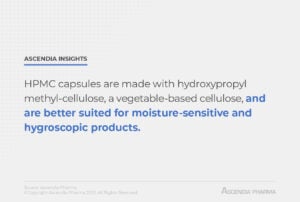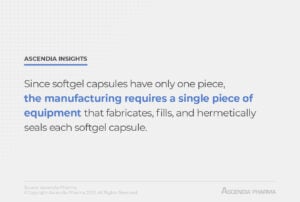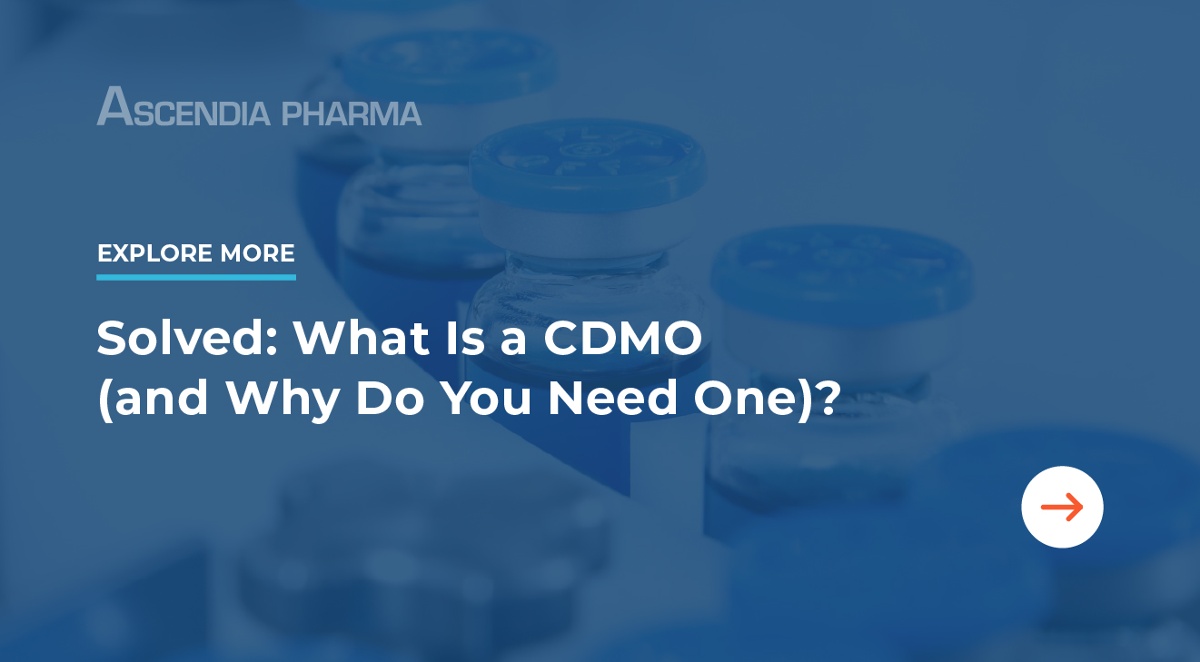Liquid Capsules Explained
Liquid capsules are a popular option for clinical trial formulations and ready-for-market small molecule drugs. Not only are liquid capsules popular with pharmaceutical companies, but they are also preferred by consumers to other formulation types. In this blog post, we’ll take a deep dive into the world of liquid-filled capsules and their many benefits.
Capsule vs. Tablet
The two most common oral-solid dosage forms are capsules and tablets. While the focus of this post is on capsules for liquid fill, it’s useful to understand tablet formulations as a point of comparison.
While tablets are the most common oral-solid formulation, tablets do have some drawbacks:
• A tablet is simply a compressed medication, so it may taste bitter or unpleasant for patients who have difficulty swallowing pills. Tablets can also have an odor that may be off-putting to some consumers. This can be overcome with coatings, although adding a coating increases manufacturing costs.
• Related to this last point, uncoated tablets are more likely to irritate the esophagus once they are swallowed.
• Tablets dissolve more slowly than capsules, which means they take longer to start working.
• Capsules are better-suited for sustained release and targeted delivery.
• Tablets have a lower bioavailability than capsules, as they may not break down completely.
• Capsules are easier to formulate, which means shorter development and manufacturing times.
• Consumers prefer capsules to tablets. Pharmaceutical companies are even reformulating existing tablet formulations as capsules to meet consumer demand.
• Tablets are more prone to tampering, as they can be crushed and split. In addition, capsules are harder to counterfeit than tablets.
Still, tablets remain the most common oral-solid formulation for several reasons:
• They’re durable and inexpensive.
• They can accommodate a higher amount of medication.
• They’re not made with gelatin, so there aren’t dietary, ethical, or religious considerations involved in prescribing them.
In fact, it’s common for drugs to begin their life cycles as capsules during clinical trials. Once approved, they often get reformulated as a tablet when they’re ready for the market.
Are Capsules Better Than Tablets?
The bottom line when comparing capsules and tablets is that each formulation has its own pros and cons. Some medications will be best formulated as capsules, while others are better suited for tablet formulations. Data gathered during preclinical studies can provide information about the chemical and physical characteristics of an active pharmaceutical ingredient (API); this information can then be used to select the right dosage form.
An experienced contract development and manufacturing organization (CDMO) can help pharmaceutical companies choose between capsules or tablets as the best form for a particular drug, as capsules, too, have their disadvantages (e.g., more expensive components, more challenging manufacturing process, harder to achieve high dosage strengths).
Types of Capsules
There are a number of different kinds of formulations that fall under the category of capsules. Here’s a quick breakdown of the three main capsule types:
1. Hard Gelatin Capsules
Hard gelatin capsules come in two forms: dry-filled hard gelatin capsules and liquid-filled hard gelatin capsules. Dry-filled hard gelatin capsules have traditionally been the most common formulation in this category, but there’s an increasing number of liquid-filled hard gelatin capsules, especially as more poorly soluble molecule drugs enter the development pipeline; these types of drugs are difficult to formulate as tablets.
Another type of gelatin capsule is fish gelatin capsules, although these are primarily used for encapsulating marine supplements like fish oil.

2. Hard HPMC Capsules and Other Vegetarian Capsules
Like hard gelatin capsules, hard HPMC capsules can also have liquid or dry fill. The primary difference here is that these capsules are made with hydroxypropyl methyl-cellulose (HPMC), a vegetable-based cellulose. HPMC capsules are vegetarian; this alone offers an advantage, but HPMC is also better suited for moisture-sensitive and hygroscopic products. Because they are not made with gelatin, HPMC capsules do not have risk of contamination with certain animal-borne diseases like bovine spongiform encephalopathy (BSE) or transmissible spongiform encephalopathy (TSE). HPMC capsules are more expensive than hard gelatin capsules, which is an important consideration for some manufacturers.
Other vegetarian capsules include:
Starch Capsules
Starch capsules are another alternative to gelatin-based capsules. They are made with potato starch, and they’re often used for enteric-coated medications.
Pullulan Capsules
Pullulan is a product made from fermented tapioca. These capsules are favored when a vegetarian capsule with a high barrier to oxygen is needed.
PVA Capsules
Polyvinyl acetate (PVA) capsules are used for filling insoluble drugs that are dissolved in polyethylene glycol 400 (PEG 400). PVA 400 capsules also have a high barrier to oxygen.
3. Soft Gelatin Capsules
Soft gelatin capsules are unique in that they can only be filled with liquids and semisolids. The gelatin exterior is plasticized, giving it a unique feel. We’ll go into more detail about soft gelatin capsules below.
Liquid-Filled Capsules: The Hard and The Soft
As you might have guessed from their name, liquid-filled capsules are exactly that — capsules filled with liquid instead of dry ingredients. Both hard and soft gelatin capsules, or softgels, can be filled with liquids. So how do pharmaceutical companies choose between them?
Liquid-Filled Hard Gelatin Capsules
A hard gelatin capsule filled with liquid medication is made with two halves — the rim of one half is smaller in diameter than the other, so the other half’s larger rim fits over it and seals the capsule. The two capsule halves are manufactured separately, then later filled using different machinery. (They can also be filled by hand when smaller batches are required.)
Liquid-filled hard gelatin capsules are flavorless, odorless, and affordable; softgels have traditionally been the most popular type of capsule for liquid formulations, but two-piece capsules have a number of advantages worth taking note of.
Benefits of Liquid-Filled Hard Gelatin Capsules
Here’s why a pharmaceutical company may wish to consider a liquid-filled hard capsule formulation for their drug product:
• Liquid-filled hard capsules are easier to develop and require less specialized equipment.
• When small-scale filling is required, hard capsules are a more practical and affordable solution than softgels.
• Liquid-filled hard capsules have a shorter manufacturing time.
• The entire manufacturing process for liquid-filled hard capsules is easier—there’s less gelatin wastage, less complexity, and fewer environmental requirements (i.e., humidity, air temperature, etc.)
• There are better branding options, with a number of customizations including logo, color, and banding.
• Liquid-filled hard capsules have a number of options that are made without gelatin.
Drugs That Benefit From Liquid-Filled Hard Gelatin Capsule Formulation
The following types of fill materials are well-suited for liquid-filled hard capsule formulations:
• Materials with unpleasant orders or tastes
• Large particule formulations
• Materials with high melting points
• Insoluble hydrophobic materials
• Materials that are oxygen-sensitive
• Moisture-sensitive materials
Softgel Capsules
Unlike hard capsules, which are made with two halves, softgel capsules have only one piece. The manufacturing requires a single piece of equipment that fabricates, fills, and hermetically seals each softgel capsule. A rotary die encapsulation machine forms two flat ribbons of capsule shell, then joins them on a twin set of rotating dies. These dies cut the ribbons into a two-dimensional shape and form a seal along the outside. At the same time, a pump fills the capsule through a nozzle in a heated filling wedge.

While hard capsules are cylindrical, softgels can be round, oval, or tubular. Finished softgels need to be dried for a minimum of two days before being packaged and shipped, which is a distinct disadvantage when compared with hard capsules.
Benefits of Softgel Capsules
Here are some of the advantages of choosing a softgel formulation:
• Softgels are easily digested and have increased bioavailability, as the capsule shell material is more quickly broken down in the stomach; hard capsules may require 30 to 60 minutes to break down.
• Softgels are considered the easiest to swallow of all oral-solid dosage formulations.
• Hermetically-sealed softgels are difficult to tamper with.
Drugs That Benefit From Softgel Capsule Formulation
Here are some types of drugs that are a good fit for softgel formulation:
• Neat substances like oils
• Solutions dissolved in carrier oils
• Semi-solid suspensions and pastes
• Water soluble drugs
Finding a Manufacturer for Liquid-Filled Capsules
At Ascendia, we specialize in the formulation of liquid capsules. We partner with a number of leading pharmaceutical companies, providing decades of experience, expertise, and a range of services that cover all stages of drug development. In compliance with current good manufacturing practice (cGMP) regulations, we offer:
• A cutting-edge facility for liquid capsule manufacturing. Our state-of-the-art manufacturing facility has the necessary equipment for capsule filling and spray drying, as well as a microfluidizer for the production of micro and nanoscale materials for liposomal products and emulsions.
• Expert support through the entire development process, from pre-formulation studies to clinical trials and beyond. We also offer rapid development through phase I clinical trial manufacturing to streamline the process of bringing your drug to market.
• Advanced stability and release testing. Our in-house finished dosage form testing includes density, hardness, friability, disintegration, and viscosity. We maintain chambers for conducting both GMP and non-GMP stability studies in accordance with ICH guidelines.
• Dosage form development. Ascendia’s oral dosage formulation services include the ability to granulate and blend capsule batches for immediate or controlled release.
• An experienced team of scientists who specialize in working with challenging APIs, complex generics, controlled release products, and nano-technology approaches to developing novel pharmaceuticals.
Learn More About Partnering with Ascendia
If your pharmaceutical company is looking for a CDMO with the knowledge, experience, and equipment to handle liquid capsule formulations, contact us today to learn more about our services.



